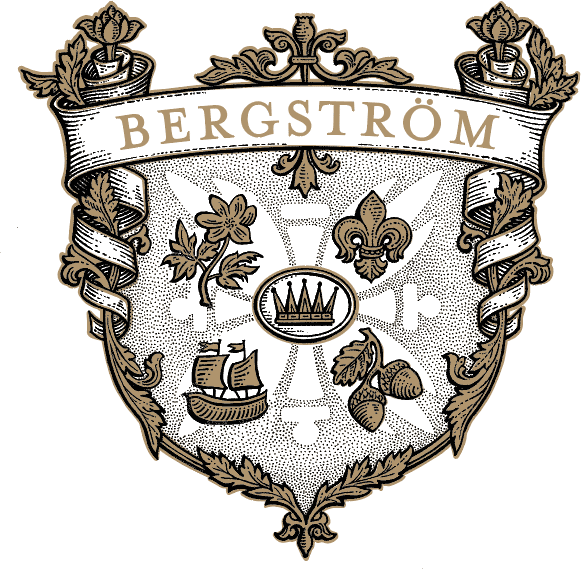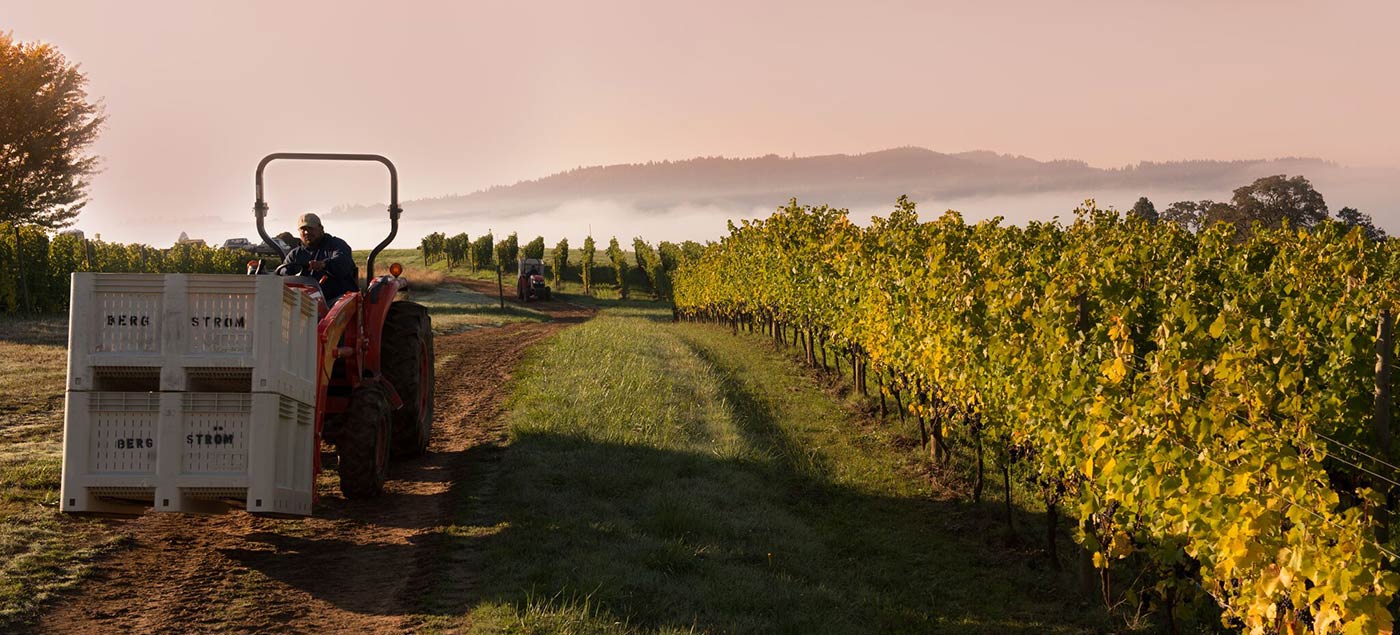My final two weeks in Burgundy were spent at two domaines: Domaine Bernard Moreau in Chassagne Montrachet and Domaine Guy Roulot in Meursault. Like Etienne Sauzet, both of these domaines and their winemakers are at the top of their game and extremely respected throughout the Cote d’Or and the world for their white wines and their very small bottlings of Pinot Noir. It was an incredible honor to be there and accepted by them and their team.
At domaine Bernard Moreau I was greeted and welcomed by the winemaking family of Bernard (father), Alexandre (winemaking son) and Benoit Moreau (vineyard manager son.) Here, this incredibly jovial and hardworking family make about the same amount of wine as Bergstrom Wines in a small winery that is about 1/3 of the size of mine. Their speciality is Chardonnay from the village and Premier Cru vineyards throughout the village of Chassagne Montrachet but they make absolutely stunning Pinot Noirs from Chassagne Montrachet, Volnay and Pommard. These are serious wines and seriously delicious as well.
Domaine Roulot in Meursault is considered one of the finest white wine domaines in the world. Jean-Marc Roulot is a multi-generation winemaker (just like at the other wineries) and he takes Chardonnay to another level. The Roulot wines are intensely mineral and energetic with incredible acid and structure. These great wines of pure breed need years in bottle before they show their true greatness. Here Jean-Marc runs a very tight ship and his full-time cellar master and vineyard team take care of the winery and its multiple small lots of Chardonnays and Pinot Noir with great care and pride. Just up the street from Domaine Coche-Dury and just down the street from Domaine des Comtes Lafon… this neighborhood is filled with Chardonnay royalty and I was very happy to be there.
Both of these domaines focus on Chardonays from single vineyard parcels in their respective villages and that is what they are best known for. But both of these producers also make a miniscule amount of very delicious Pinot Noir every year from purchased fruit or small holdings from neighboring villages.
Chardonnay harvest in Burgundy rolls much like our harvest does in Oregon, we schedule, we pick, we sort, we press, we settle and we make wine. What Burgundy has that many American wineries do not have is a “culture” of harvest that emphasizes the celebration of the ritual of bringing in fruit, and the intentional placement of the exclamation point on a year’s worth of hard work. This is the end of the circle; the grande finale of the year for winemakers, and in Burgundy they do it right.
To give you a better idea of how the culture of a Burgundian harvest day is structured; my days at the wineries usually went something like this:
8AM: We start the work day by placing vineyard bins in the vineyards or emptying and cleaning the grape presses of the fruit from the night before. The courtyard of each winery is filled with 40-50 harvest workers, who have come from all over France to pick grapes. They are jovially drinking coffee, smoking cigarettes and talking about the party that raged the night before, and how sore they are from stopping over to pick grapes all day….. but there are no unhappy people here. Most of these workers are lodged and fed by the winery . Some of these harvesters have been harvesting at the same winery for more than 30 years! They actually schedule their annual vacation time to leave home and come here to pick fruit.
8:15-9:55: We Receive fruit, and begin pressing fruit, chaptalizing juice, taking juice to barrels, cleaning most of the technical work and enological adjustments if needed are happening in this period.
10:00: The “Casse-Croute”, or the “Breaking of Bread.” Here everyone stops what they are doing, whether in the wineries or in the vineyards and bottles of juice and wine are opened, sausages and cheeses are sliced and bread is passed around for the morning snack. This moment is sacred for the harvest workers, and a great French tradition. This would qualify as a LIABILITY for most American businesses. Liability is not a word that French businesses recognize when it comes to traditional and cultural terms such as “drinking wine on the job.” But, this is not a party, just a break.
10:30-12:30: More work, but slightly happy and dizzy from the “Casse-Croute”.
12:30-12:50: A refreshing pre-lunch beer. Each winery had beer on tap from keg somewhere in the cellar and the harvest workers would return from the fields dripping with sweat and sticky grape juice to quench their great thirsts and clean up prior to lunch. We took the opportunity to share in that refreshment.
12:50-2:30: The wives and girlfriends of the winery’s Moreau family cook a wonderful meal for 50 people and all of the vineyard workers eat side by side with the winery workers and the family. Each lunch and dinner involves at least 3 courses of food with bottles of house red and white wine on the tables. cheese, as well as dessert and coffee are offered afterwards. The Harvest workers all stretch and lazily enjoy the sunshine in the courtyard. Some revisit the beer keg prior to jumping back into the harvest vans to head out to the vineyards for the afternoon pick.
2:30-7:00: more work, slow at first then we find our rhythm and work hard until dinner time, sometimes through dinner and straight on until the late night. The afternoon is the most serious part of the day as far as long hours of hard work.
Dinner+: Work may continue to midnight or past depending on the fruit that was harvested that day.
So you see, harvest in Burgundy is about making wine but also about enjoyment and
celebration; balancing hard work with a healthy amount of eating and drinking and relishing in the moment. To nourish the appetite and the spirit and to complete the year’s cycle of growing and making wine are the annual objectives of a harvest in Burgundy. I loved how the villages came together to celebrate the year. As we worked to finish our respective work, vans decorated in grape leaves and clusters and ribbons poured through the village honking and the harvesters who were all crammed inside were singing and yelling at the tops of their voices to announce to the rest of the village that they had finished their harvest and were preparing for the annual “Paulee” which is the traditional all-night party full of great foods and lots of wine where each winery celebrates the last day of picking. For one final night the 30 to 40 pickers will join the family and the winery staff to sing and dance and eat and drink and be happy about a year’s worth of hard work.
In conclusion, I travelled back to Burgundy to open my eyes, to become inspired and to potentially discover new practices or techniques that would make me a better Chardonnay producer and a better winemaker in General. And although I did discover many interesting winemaking techniques and approaches that I will look to implement in my wines in the coming years, I also discovered what I already knew; and that is that great wines only come from great places. Terroir does exist if you go to the source and taste the wines. Authenticity in wine, which is what we strive to produce, can only come from great Terroir. Whether you are in Burgundy or in Oregon, to taste a great Chardonnay or Pinot Noir usually means that there is a special vineyard that has fortunately fallen into the hands of a caretaker whose goal is to simply tell this special vineyard’s message.
I also went back to Burgundy believing that it was the King of Chardonnay and that my small and young region of Oregon had promise to someday compete at their level. I returned from Burgundy more inspired than ever that what we are doing with Chardonnay in Oregon is exciting and full of promise. I could not be more proud than I am today to be an Oregon winemaker, and to be one of the wineries who are trying to redefine American Chardonnay. Stay tuned for positive results.







